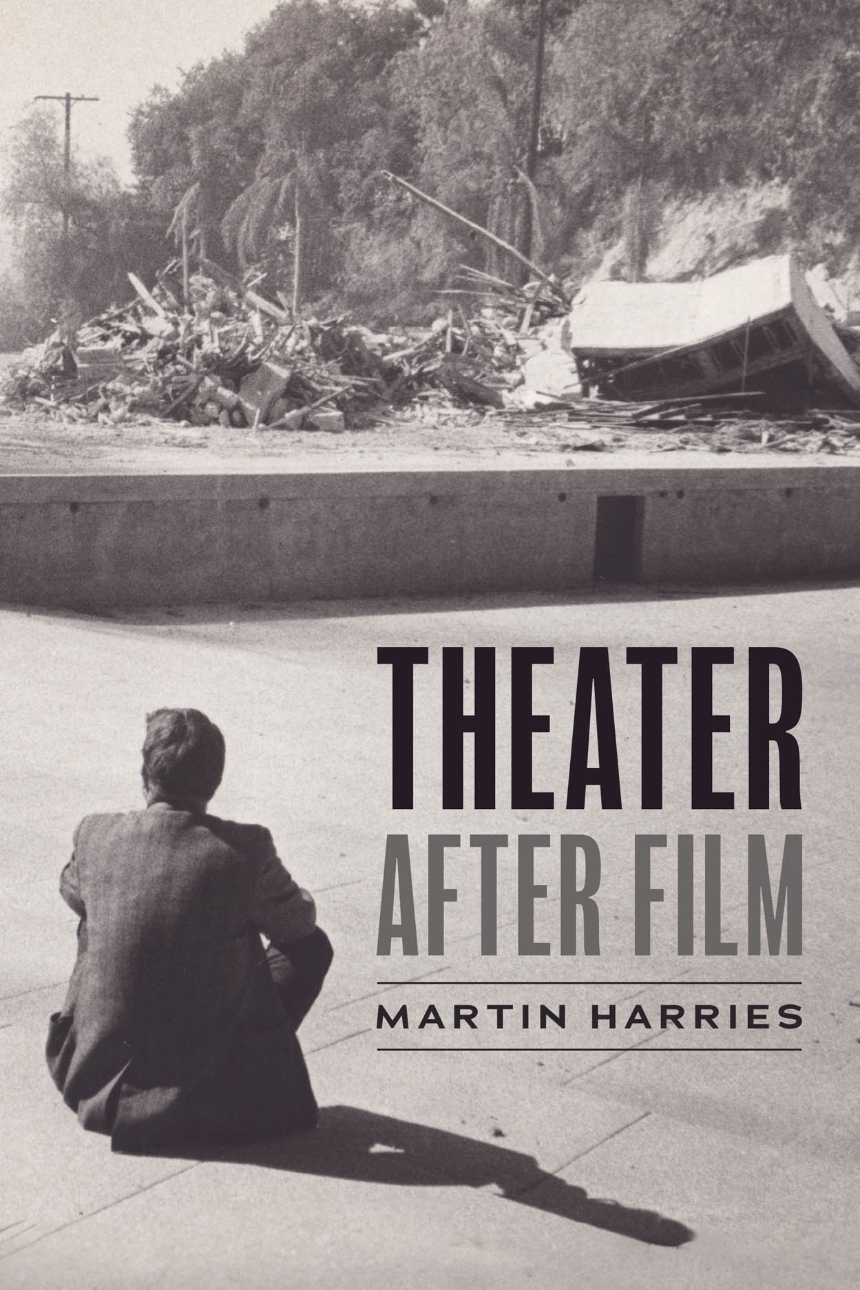Theater after Film
A study of the impact of film and mass culture on drama after World War II.
In Theater after Film, Martin Harries argues that after 1945, as cinema became omnipresent in popular culture, theater had to respond to cinema’s hegemony. Theater couldn’t break that hegemony, but it could provide a zone of contestation. Theater made film’s domination of the cultural field visible through hyperbole, refusal, and other strategies, thereby unsettling its power. Postwar theatrical experiment, Harries shows, often channeled and represented film’s mass cultural force, while knowing that it could never possess that force. Throughout the book, Harries brings critical theory into contact with theories of performance. Although Theater after Film treats the theatrical work of many figures, its central focus falls on Tennessee Williams, Samuel Beckett, and Adrienne Kennedy. Discussions of these dramatists consider their ways of addressing spectators, the politics of race between film and theater, and the place of the theatrical apparatus. Readings of these central figures in twentieth-century theater exemplify the book’s historical engagement with the media surround that drama confronted. This confrontation, Harries shows, was central to the development of some of the most continually compelling postwar drama.
In Theater after Film, Martin Harries argues that after 1945, as cinema became omnipresent in popular culture, theater had to respond to cinema’s hegemony. Theater couldn’t break that hegemony, but it could provide a zone of contestation. Theater made film’s domination of the cultural field visible through hyperbole, refusal, and other strategies, thereby unsettling its power. Postwar theatrical experiment, Harries shows, often channeled and represented film’s mass cultural force, while knowing that it could never possess that force. Throughout the book, Harries brings critical theory into contact with theories of performance. Although Theater after Film treats the theatrical work of many figures, its central focus falls on Tennessee Williams, Samuel Beckett, and Adrienne Kennedy. Discussions of these dramatists consider their ways of addressing spectators, the politics of race between film and theater, and the place of the theatrical apparatus. Readings of these central figures in twentieth-century theater exemplify the book’s historical engagement with the media surround that drama confronted. This confrontation, Harries shows, was central to the development of some of the most continually compelling postwar drama.
Reviews
Table of Contents
1. Preface
2. Incommunication
3. Theater/Media
4. Demolition of a Theater (1901)
5. Residual Becomes Emergent
6. Medium/Media/Mediation in Reverse
7. Theater/Film
8. Apparatus
9. Williams, Beckett, Kennedy
10. Walter Benjamin’s Work of Art Essay
11. Benjamin’s Medium
12. Modernism: Shaw, Lorca, Brecht
13. Participation in Postwar Theater
14. Artaud’s Voice against Radio
15. Publics
16. Handke’s Offending the Audience
Tennessee Williams
17. Williams’s Material
18. Learning Sexual Violence with Tennessee Williams, or Streetcar in Pictures
19. Lead Belly’s Guitar and Williams’s Counterpublics
Samuel Beckett
20. Beckett, Cinema, Politics
21. Film and Its Audiences
22. Catastrophe: Fixing the Audience
23. Endgame, Postwar Mass Culture, and Forms of Address
24. Beckett, the Proscenium, Media
25. Product Placement
Adrienne Kennedy
26. Theater after Hollywood
27. A Movie Star in 1976
28. The Author as Produced: Hollywood/Jim Crow
29. Diary of Lights
30. Afterword/After Theater
Acknowledgments
Bibliography
Index
2. Incommunication
3. Theater/Media
4. Demolition of a Theater (1901)
5. Residual Becomes Emergent
6. Medium/Media/Mediation in Reverse
7. Theater/Film
8. Apparatus
9. Williams, Beckett, Kennedy
10. Walter Benjamin’s Work of Art Essay
11. Benjamin’s Medium
12. Modernism: Shaw, Lorca, Brecht
13. Participation in Postwar Theater
14. Artaud’s Voice against Radio
15. Publics
16. Handke’s Offending the Audience
Tennessee Williams
17. Williams’s Material
18. Learning Sexual Violence with Tennessee Williams, or Streetcar in Pictures
19. Lead Belly’s Guitar and Williams’s Counterpublics
Samuel Beckett
20. Beckett, Cinema, Politics
21. Film and Its Audiences
22. Catastrophe: Fixing the Audience
23. Endgame, Postwar Mass Culture, and Forms of Address
24. Beckett, the Proscenium, Media
25. Product Placement
Adrienne Kennedy
26. Theater after Hollywood
27. A Movie Star in 1976
28. The Author as Produced: Hollywood/Jim Crow
29. Diary of Lights
30. Afterword/After Theater
Acknowledgments
Bibliography
Index
